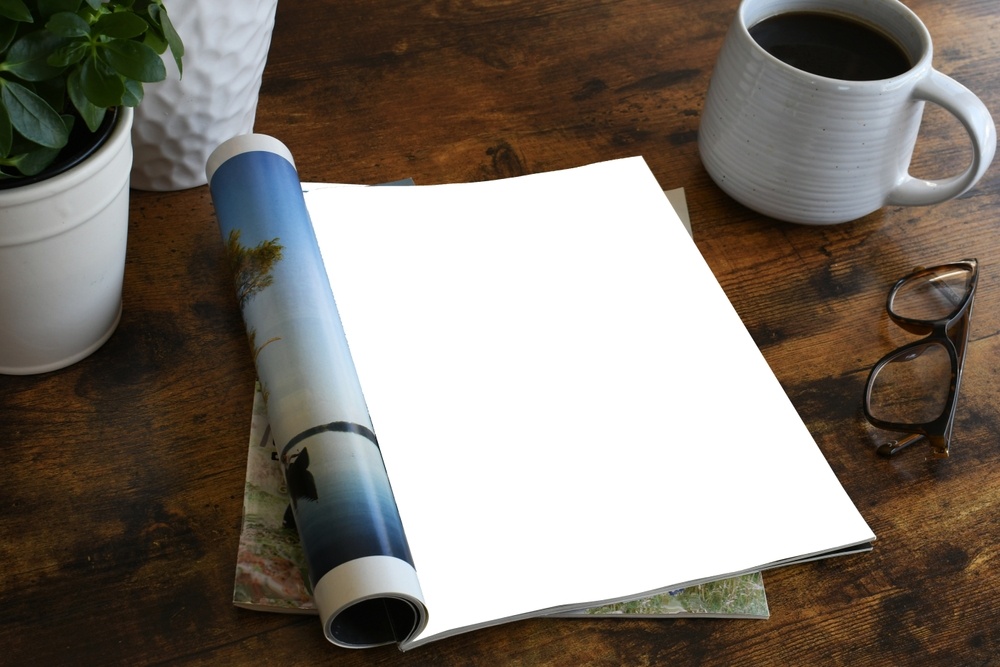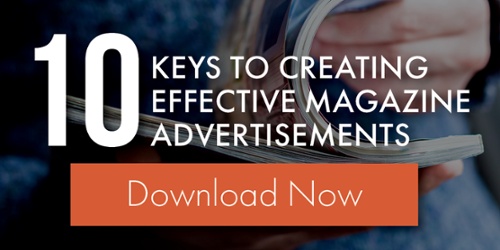Missouri Marketing Resource Blog

Creating Impactful Magazine Ads: Design and Content Tips

Print advertising, especially in magazines, offers a powerful opportunity for local businesses to enhance their brand awareness. Magazines, with their glossy pages and dedicated readership, provide a unique platform to engage consumers in a tactile and visually stimulating way.
This blog post will guide you through creating impactful magazine ads, focusing on design and content to ensure your message stands out. Whether you're a marketer, graphic designer, or advertising professional, you'll find valuable tips and insights to boost your print advertising efforts.
Key Points to Evaluate Before Creating an Ad
Your Target Audience for Effective Ad Design: Before you start designing your ad, it's crucial to understand who will be reading it. Different magazines cater to different demographics, from fashion-forward teens to business executives. Conduct thorough research on the magazine's readership to tailor your ad content effectively. Knowing the age, gender, income level, and interests of the readers can help you craft a message that resonates.
Targeting Ad Placement in Magazine Sections: Next, consider the specific sections of the magazine where your ad might appear. Some sections might attract different subsets of the magazine's audience. For example, a tech section may draw in readers who are more tech-savvy and interested in the latest gadgets, whereas a lifestyle section might appeal to readers looking for wellness tips or home decor advice.
Aligning Ads with Editorial Themes: Pay close attention to the magazine's editorial calendar, which often outlines themes or special editions planned for the year. Aligning your ad with these themes can enhance its relevance and impact. For instance, an ad for vacation packages might perform better in a summer travel special edition than in a regular monthly issue.
Harmonizing Your Ad with the Magazine's Aesthetic: Take into account the overall aesthetic and brand voice of the magazine. Your ad should seamlessly integrate with the magazine's look and feel to avoid jarring the reader. This means carefully selecting the color palette, fonts, and graphics used in your ad to ensure they complement the magazine's design.
In summary, by delving deep into the magazine's audience, editorial structure, and aesthetic, you can design an ad that not only reaches its intended viewers but also speaks to them in a way that is engaging and effective. This thorough approach can significantly enhance the success of your advertising campaign.
Creating Eye-Catching Magazine Ad Design
Effective ad design is more than just aesthetics; it's about functionality and impact. Use the principles of design—balance, contrast, alignment, repetition, and proximity—to guide your layout. Ensure that the design elements work together to draw the reader's eye to the most important parts of the ad, such as the headline and call-to-action.
- Effective Use of Visuals and Fonts in Magazine Ads: Visuals are critical in magazine ads. High-quality images can capture attention and evoke emotions, while poorly chosen visuals can detract from your message. Choose images that are relevant to your product and audience. Similarly, font choice can influence readability and the overall tone of your ad. Use fonts that are clear and consistent with your brand identity.
- Color Psychology: Use colors that evoke the right emotions and resonate with your brand and message. Different colors can significantly impact perception and behavior. For example, blue often conveys trust and professionalism, while red can evoke excitement and urgency. Understanding the psychological effects of colors allows you to create a cohesive and compelling visual identity that aligns with your brand values and effectively communicates your message to your audience.
- Hierarchy: Establish a clear visual hierarchy to guide the reader's eye through the ad in a logical order. This ensures that the most important information is seen first, followed by supporting details, creating a smooth and intuitive reading experience.
- Testing: A/B testing involves creating different versions of your ad to determine which one performs better in terms of engagement and conversion rates. By comparing these variations, you can gather valuable data on what resonates most with your audience, allowing you to optimize your ad strategy for maximum effectiveness. This process helps in making data-driven decisions, ensuring that your marketing efforts are both efficient and impactful.
Crafting Compelling Ad Copy
Writing Headlines that Grab Attention
Your headline is the first thing readers will see, so make it count. It should be concise, engaging, and relevant. Use action words and emotional triggers to grab attention. A compelling headline can make the difference between a reader skimming past your ad and stopping to read more.
Creating Concise Yet Impactful Body Copy
Once you've captured attention with your headline, your body copy needs to hold it. Keep your copy concise and to the point. Focus on the benefits of your product or service, and use bullet points or short paragraphs for easy readability. Remember, less is often more when it comes to print advertising.
Adding Call-to-Actions
A call-to-action (CTA) is a critical component of your ad, guiding the reader on what to do next. Whether it's visiting a website, calling a phone number, or visiting a store, make your CTA clear and compelling. Use strong action verbs and create a sense of urgency. Position your CTA prominently within the ad to ensure it's easily noticed.
Measuring Magazine Ad Success
Measuring the success of print ads can be challenging but achievable with the right methods:
- Track ROI: Use unique phone numbers, promo codes, or landing pages featured in your print ads to directly link customer responses and sales to specific advertisements.
- Monitor Engagement: Pay attention to response rates from unique identifiers like calls to a dedicated phone line or visits to a designated webpage to gauge audience interest.
- Collect Customer Feedback: Use surveys to ask customers how they discovered your product or service, gathering qualitative data to complement quantitative metrics.
- Analyze Metrics: Refine your strategy for future campaigns by understanding which elements of your print ads are most effective, and making informed decisions about design, messaging, and placement.
Combining these methods allows you to continually improve your advertising efforts and achieve better results.
The art of creating impactful magazine ads lies in the perfect blend of compelling content and striking design. By understanding your audience, leveraging design principles, crafting engaging copy, and including effective CTAs, you can create ads that not only capture attention but also drive results. Remember, creativity and strategic thinking are your best tools for making a lasting impression in print advertising. Ready to elevate your print advertising game? Start implementing these tips today and watch your ads transform into powerful marketing tools.
